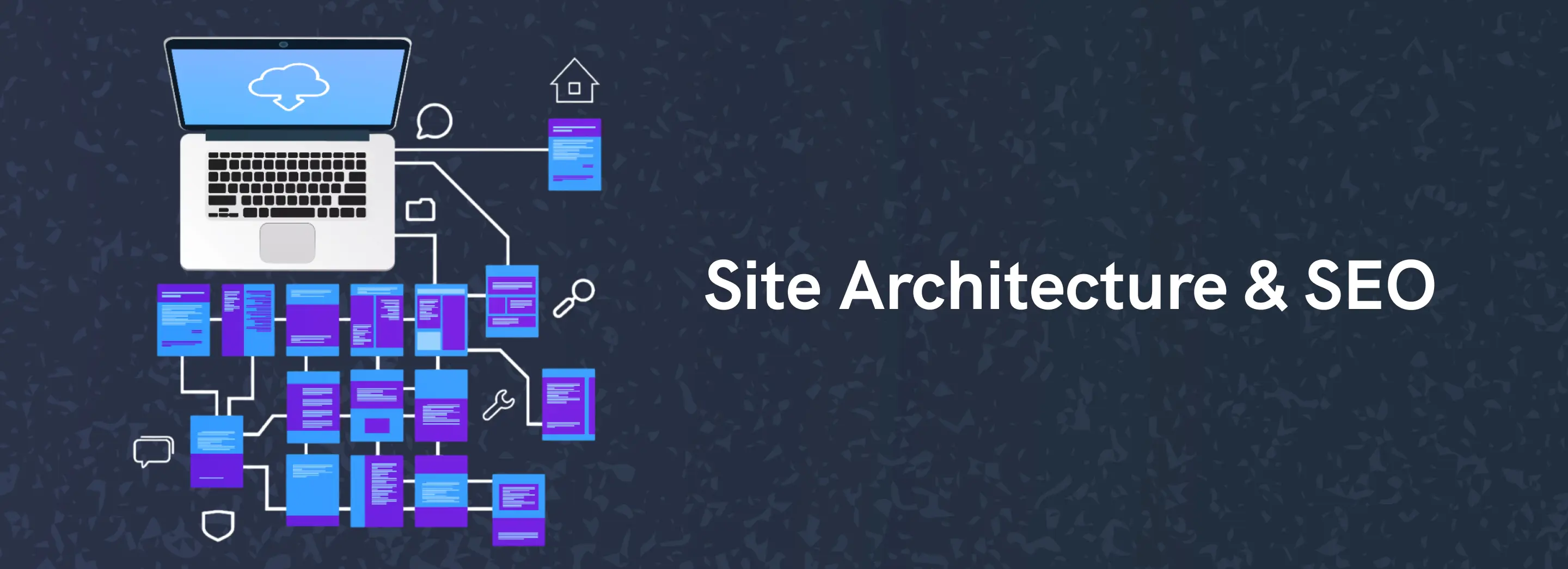- Introduction
- What Is Site Architecture in SEO?
- Why Site Architecture Matters for SEO?
- SEO-Friendly Site Architecture
- Structure of Different Website Types
- Tools to Audit and Optimize Site Architecture
- Common Site Architecture Mistakes to Avoid
- Future-Proofing SEO: Entity-Based Architecture
- Final Thoughts
In today's digital-first era, a website is no longer just a mere virtual store website that constitutes the entire online presence of a brand. But no matter how beautiful or persuasive the design and messaging are, if the website lacks good organization, neither search engines nor users will find it valuable. Hence, site architecture is a major issue in SEO.
A sound site architecture improves search visibility and works in conjunction with better UX and SEO performance. Designing seamless digital journeys for brands, beginning with practical website architecture, makes both search engines and user experience smooth.
Let us begin by understanding how efficient site architecture fuels SEO efficacy and how to build a website right.
What Is Site Architecture in SEO?

Site architecture is the way pages in a website are structured and linked together. It is essentially the blueprint of how your site pages are grouped and categorized and how they are made accessible from the homepage. In SEO terms, a strong site architecture helps search engine bots crawl and index your content efficiently.
From the user standpoint, site architecture determines if they will be able to navigate the site with ease and locate the information they want to perform a specific action. For search engines like Google, a clear and well-linked structure means the topic relevance and importance of a page.
Why Site Architecture Matters for SEO?
Let’s break down the SEO benefits of proper site architecture:
1. Improved Crawlability
Search engine bots rely on internal links and structure to discover content. A disorganized site with scattered or orphaned pages may prevent Google from indexing crucial content. A logical, hierarchical structure ensures bots can crawl every page effectively.
2. Efficient Indexing
Google doesn’t index every page of a large site unless it deems them important. Site architecture, with strategic linking and categorization, helps highlight high-value content, ensuring it gets indexed and ranked.
3. Link Equity Distribution
Internal links pass authority from high-ranking pages to others. A good structure spreads this link equity efficiently across your website, improving the visibility of multiple pages—not just your homepage.
4. Better User Experience
Google’s algorithm increasingly favors user behavior. If your structure aids fast, intuitive navigation, users stay longer, bounce less, and engage more—all positive SEO signals.
5. Sitelinks in Search Results
Well-organized websites can be rewarded with site links in Google’s search results—those extra links under your main result that help users navigate directly to key sections. This boosts click-through rate (CTR) and brand credibility.
Core Principles of SEO-Friendly Site Architecture
To ensure your site ranks well and satisfies both bots and humans, follow these core site architecture principles:
- Use a Flat, Hierarchical Structure
Aim for a flat site structure, where every page is reachable within three to four clicks from the homepage. This enhances crawlability and reduces the chance of orphan pages. Use categories and subcategories logically:
Example:
· Home
· Products
· Electronics
· Smart TVs
This structure ensures optimal depth and accessibility. - Design Clear URL Structures
Your URL paths should reflect your site’s hierarchy. Descriptive, keyword-rich URLs are easier for users to understand and for Google to rank.
Good URL:
www.example.com/blog/seo-best-practices
Bad URL:
www.example.com/post?id=1234 - Create an XML Sitemap
An XML sitemap acts as a roadmap for search engines. It lists all important URLs you want indexed and helps bots navigate even if your internal linking is imperfect. - Implement Internal Linking Strategically
Internal links connect your pages, guiding users and distributing link equity. Use descriptive anchor text (e.g., "SEO audit checklist") rather than generic text like “click here.” This enhances both contextual relevance and keyword association. - Avoid Duplicate Content and Cannibalization
Poor structure often results in duplicate pages or multiple URLs targeting the same keyword. This causes keyword cannibalization and confuses Google about which page to rank. Define one canonical page per topic and interlink judiciously.
Best Practices for Structuring Different Website Types
Depending on your website's purpose, the structure will vary. Here’s how to adapt:
1. For eCommerce Websites
Organize products into clear categories and subcategories.
Create separate pages for each product, not just lists.
Implement faceted navigation carefully (e.g., filters for price,and color), ensuring it doesn’t create duplicate URLs.
Optimize internal search pages for user experience, not for indexing.
2. For Blog and News Sites
Use topic clusters to group related content.
Link new blog posts to pillar pages (comprehensive guides on a main topic).
Archive old posts by date and category.
Avoid excessive tagging—too many tags can dilute your site’s structure.
3. For Corporate/Service Websites
Organize services under solution-based categories.
Include location-based landing pages if targeting specific regions.
Maintain a Resources section for case studies, whitepapers, and blogs.
Tools to Audit and Optimize Site Architecture
At BrandStory UAE, we recommend using tools that can help audit and enhance your site structure:
- SEMrush Site Audit: Detects crawl issues, broken links, and structure gaps.
- Screaming Frog SEO Spider: Visualizes your architecture by crawl depth and link flow.
- Google Search Console: Monitors how Google indexes and navigates your site.
- Yoast SEO (for WordPress): Provides internal linking suggestions and SEO tips.
Avoid overstuffing. The goal is natural integration to build relevance and context.
Common Site Architecture Mistakes to Avoid
Even well-intentioned designs can go wrong. Watch out for these pitfalls:
- Too Deep Navigation
When important pages are buried too deep (beyond 4 clicks), bots may overlook them, and users may struggle to find them. - Orphan Pages
Pages without internal links are considered orphaned—they’re invisible to crawlers and visitors unless directly accessed. - Overuse of JavaScript Navigation
Search engines sometimes struggle with JavaScript-heavy menus. Always include an HTML fallback and static links. - Unoptimized Mobile Structure
With mobile-first indexing, ensure your mobile site maintains the same structure and navigational ease as your desktop version.
Future-Proofing SEO: Entity-Based Architecture
As Google shifts toward semantic search, structuring content by topics and entities (people, places, brands, services) is gaining importance. Hence, this is where your site must be organized, not just by keywords, but also by the context in which information is linked.
For example, instead of treating “SEO” as a standalone keyword, generate a content junction that links it with related entities like “search engine,” “Google algorithm,” “technical SEO,” and “content optimization.”
Final Thoughts
We believe that successful SEO starts with a well-organized foundation. Site architecture is not just about pleasing Google, it’s about guiding your visitors through a seamless journey from interest to action.
Investing in a solid structure today pays dividends in visibility, traffic, and trust tomorrow.
Remember:
If users can find it easily, so can Google.
If it’s valuable to users, it’ll be valuable to your SEO.
Need help restructuring your website for better SEO performance? Let the best SEO agency in Dubai guide your growth. From strategy to implementation, we turn digital chaos into structured success.
Get in touch with us today to audit your website’s architecture and unlock its full SEO potential.
We are BrandStory
Get in touch with us at info@brandstory.in to create a pleasant experience for your audience and a great success for your business.








